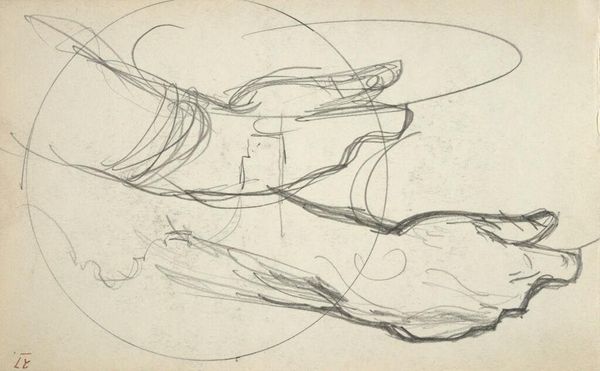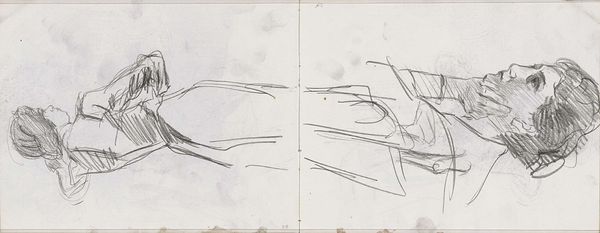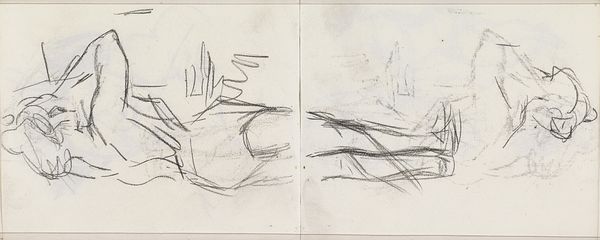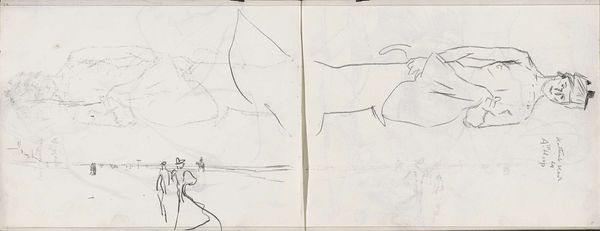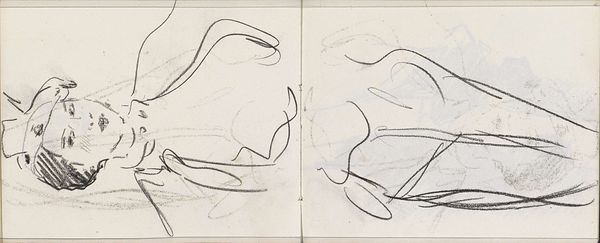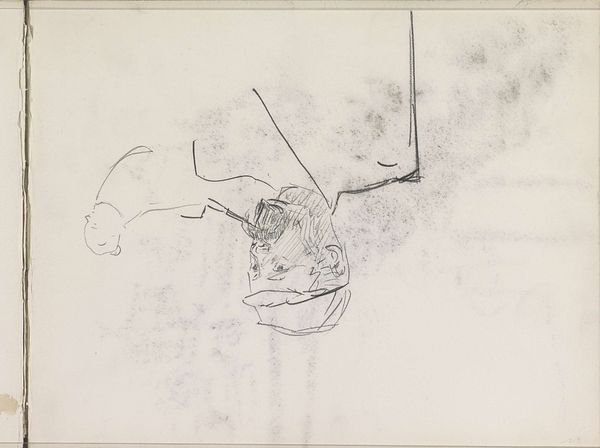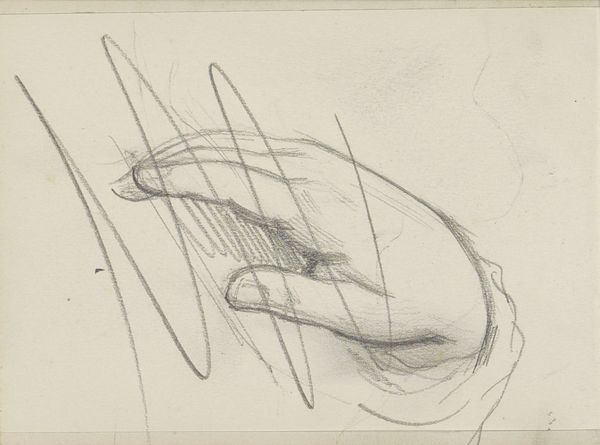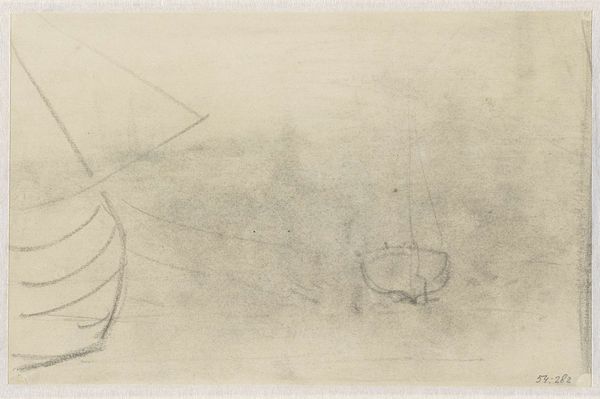
Copyright: Rijks Museum: Open Domain
Curator: This work, titled "Twee meisjes," or "Two Girls," comes to us from Isaac Israels. He likely made this drawing on paper with pencil somewhere between 1875 and 1934, and it now resides here at the Rijksmuseum. What strikes you initially? Editor: Well, a sense of incompleteness, actually. It’s all these quick, scribbled lines that barely suggest forms. Like catching a fleeting glimpse of something beautiful just out of reach, like a memory fading even as you try to grasp it. Curator: I think that sense of incompleteness you describe really speaks to the essence of Impressionism, a style Israels was quite known for. The open composition, the focus on capturing a transient moment... Editor: Yes, but for me, it goes beyond just Impressionism. It feels deeply personal, almost voyeuristic. Like looking into a private sketchbook where the artist is thinking aloud with his pencil. Curator: Israels moved within the social circles of The Hague School and later gravitated towards a more international style rooted in Parisian Impressionism. So it’s important to think about the cultural context informing his style choices here. These sketches show the artist working to break away from some of the dominant trends... Editor: Right, I understand all that. But isn't it also about how we *feel* when we look at art? The gestural quality communicates something immediate and honest about how Israels saw these young women, even without polished detail. The marks suggest their very life forces and movement. Curator: Indeed, his commitment to modernity drove him to seek spontaneous renderings of reality, focusing on the everyday—particularly in depictions of working-class people and society. I wonder about his engagement with gender at that time... Editor: Gender, perhaps, but also a deep humanity. Look at how these sketches soften. You barely see defined features. It seems a vulnerable portrayal, you can see right into the souls here. Curator: Well said, the power of Israels lies, arguably, in his capturing of everyday moments that nonetheless provide insight into the wider context of Dutch society during his time. This drawing encapsulates how artistic choices reflect and shape cultural narratives. Editor: I completely agree. For me, standing here, the scribbled simplicity gets at something profound about how we all see and remember one another. Just these suggestive lines. A shared humanity and vulnerability exposed through this small paper.
Comments
No comments
Be the first to comment and join the conversation on the ultimate creative platform.
